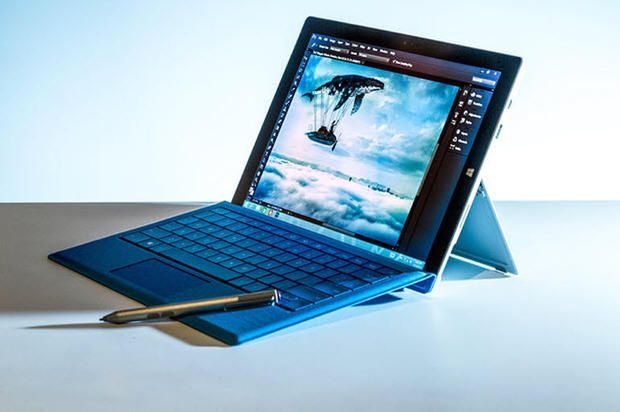
Apple wowed the world this week. Yes, there's apparently some sort of wrist-based timepiece or something, but that's not what I'm talking about. Apple also unveiled the new MacBook line Monday, and it looks like a very impressive, well-engineered laptop. So, how does the new MacBook stack up against the Surface Pro 3?
Well, let's take a closer look at that.
Apple's new MacBook is very thin. It's barely more than half an inch thick at its bulkiest end. The front edge is almost like a knife edge at just 0.14 inches. The footprint is 11.04 inches by 7.74 inches. The MacBook is also very light at just two pounds.
That all sounds very impressive until you look at the Surface Pro 3. The Surface Pro 3 has a slightly larger footprint -- 11.5 inches by 7.93 inches. However, it's only 0.36 inches thick across the whole device and weighs only 1.76 pounds. If you add a Type keyboard cover -- which you should, to keep things fair -- the Surface Pro 3 becomes 0.56 inches thick and the weight climbs to 2.4 pounds.
The new MacBook has a 12-inch Retina display with a resolution of 2304 x 1440. That's not too shabby. The Surface Pro 3 also has a 12-inch display. Its resolution is a little lower at just 2160 x 1440, but the Surface Pro 3 display is also touchscreen-enabled and comes with a Surface Pen for handwriting, drawing, and other input.
The new MacBook uses a less powerful Intel Core M processor, while the Surface Pro 3 line is built on a 4th generation Intel Core i3, i5, or i7 processor, depending on which model you choose. The two devices claim similar battery life, and both have 802.11ac Wi-Fi and Bluetooth 4.0 support. They both have cameras, but the MacBook has only a front-facing 480p FaceTime camera, while the Surface Pro 3 has front and rear-facing 5 megapixel cameras.
When it comes to ports and expandability, the Surface Pro 3 wins. The new MacBook has only two ports -- an audio jack for headphones and a USB-C port. The USB-C port can be used for charging, USB devices, or connecting an external display. There's only one port, though, so if you want to do all three of those things at once, you'll need an additional dongle that costs $80.00 (USD).
The Surface Pro 3 has an audio jack for headphones in addition to a USB 3.0 port, mini DisplayPort, and a microSD memory card slot. The Surface Pro 3 also includes a variety of features and functions lacking in the MacBook, such as an accelerometer, gyroscope, and magnetometer.
What about price? The new MacBook is $1,299 for the 256 GB model, and $1,599 for a version with a 512 GB SSD. Tack on the extra $80 for the USB-C dongle, and you'll pay $1,379 and $1,679.
The Surface Pro 3 starts at $799 for a Core i3 model with only 64 GB of storage. That's not exactly apples to apples, though. The Intel Core i5 Surface Pro 3 with 256 GB SSD costs $1,299 -- the same as the MacBook. You have to add on the $129 for the Type keyboard cover as well, though, so it's $1,429.
You have to spend $1,949 to get the Core i7 Surface Pro 3 if you want a 512 GB SSD, so the 512 GB MacBook is a much better deal. On the other hand, you can add 128 GB of storage to the 256 GB Surface Pro 3 with a microSD card for under $100.
For the most part, the two end up fairly even. There's a little give and take in the specs and capabilities, but in general, they're very similar -- all the way down to the cost. It basically boils down to spending $1,379 for the MacBook or $50 more for an equivalent Surface Pro 3.
Of course, the Surface Pro 3 can also be reclined to virtually any angle on its kickstand or detached from the Type keyboard cover and used as a tablet. I highly recommend that you don't try to do that with a new MacBook.



